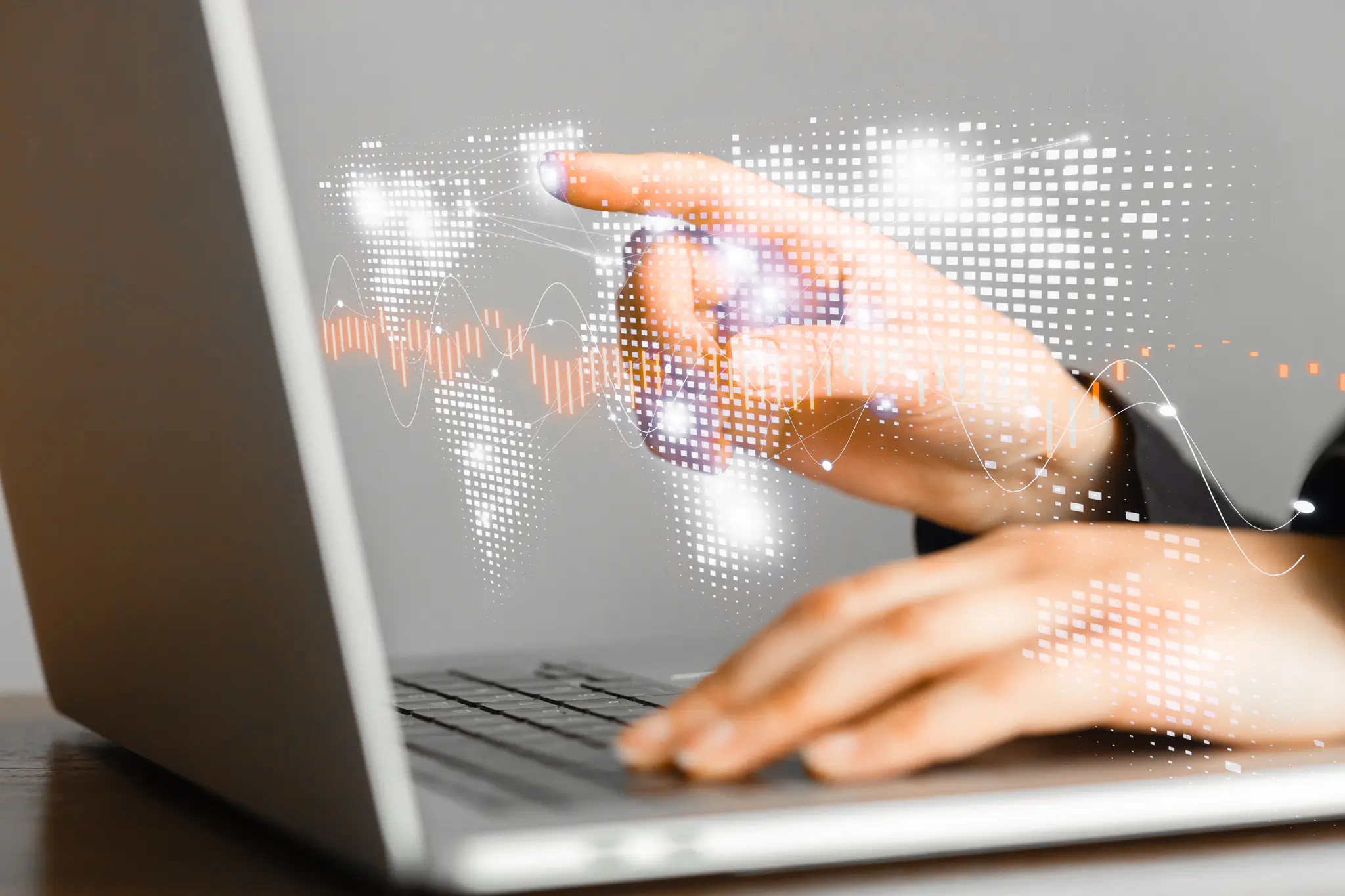What Is a Logistics Service Company?
A logistics service company is an outsourced company that offers supply chain management services, including procurement, inventory management, demand planning, warehousing, transportation, and customer service.
Logistics service companies enable companies to efficiently move goods, services, and information from Point A to Point B. They help businesses bypass shipping and labor shortages, control transportation costs, avoid delivery delays, and improve customer satisfaction.
Moreover, logistics companies have the expertise and technological tools to help businesses track supply chain performance and identify ways to improve profitability.
Some logistics companies specialize in specific parts of the logistics process, such as storing goods and transportation services, whereas others can manage entire supply chain operations.
According to a recent Allied Market Research study, the logistics industry is projected to grow to $12 trillion dollars by 2027.
In this article, we’ll look at the different services offered by logistics service companies that help businesses optimize their logistics processes and drive customer value.
Examples of Logistics Services for Businesses
Every logistics service company is unique. Warehouse management, monitoring systems, transportation, and customer service are all included in most fulfillment services. Freight forwarding, freight brokering, and cross-docking are some of the extra services that some logistics services offer to their customers.
Understanding what features and capabilities are offered and what to expect from a logistics service company will aid you in developing a successful logistics strategy.
Logistics Intelligence
Logistics Intelligence is a predictive analytics service that unlocks logistics insights by tapping into data gathered from each supply chain step. It uses AI and Machine Learning (ML) algorithms to:
- Measure the accuracy of your demand forecasts and make adjustments when necessary
- Use data gathered from sensors to identify patterns and offer recommendations for better inventory placement, optimal package sizes, optimal shipping service selection, and much more
- Enhance customer service by predicting customer behavior and needs
- Identify optimal delivery routes for each vehicle by processing streams of geographical, shipment, and traffic data in real-time.
Sifted Logistics Intelligence allows you to turn your logistics data into actionable insights to improve your business performance. It helps you track the transportation costs of your goods, simulate operational changes before committing to them, and optimize costs for better logistics management.
Distributed Inventory
Distributed inventory is an order fulfillment service commonly used by eCommerce companies to provide faster and cheaper delivery options to their customers.
This approach involves storing your physical inventory in multiple warehouses and fulfillment centers located in close proximity to your customer base. Third party logistics providers manage fulfillment centers in multiple locations, and they help shippers figure out the most profitable locations for storing inventory using purchase history and predictive analytics.
Distributed inventory also allows you to expand into new markets without spending a lot of resources.
Without a distributed inventory, retailers have to store all their inventory in a single warehouse. This results in longer transit times and higher costs when shipping to higher shipping zones. Alternatively, when you split your physical inventory in multiple locations, you can send products to customers from a distribution center closer to them, reducing the shipping distance, time in transit, and shipping costs.
Monitoring Systems
The purpose of logistics management is to enable individuals, systems, and processes to deliver goods and services to the end user in an efficient manner.
Continuously monitoring logistics processes is an essential part of logistics and supply chain management as it helps managers ensure that outcomes match business objectives.
Logistics monitoring involves collecting and providing information to logistics managers about different logistics functions, including procurement, material handling, inventory management, transporting services and fleet management, packaging, and order processing. This keeps managers informed about supply status, future commitments, and replenishment capacity.
While traditional monitoring processes, like physical inventory counting, are still used by small businesses, modern tracking systems have rapidly transformed the logistics industry.
RFID tags and connected GPS sensors give business managers complete visibility into the supply chain from the point of origin to the point of consumption. Logistics managers receive real-time updates when raw materials are loaded on trucks, distributors deliver finished goods to retailers, and the end customer purchases the product. This information helps them evaluate the performance of logistics operations, enhance warehouse management, and increase customer satisfaction.
Sifted understands that your logistics needs are unique and our shipping health scoring system gives you the ability to measure the performance of your operations. Get your Sifted Score today!
Third Party Logistics (3PLs)
Third party logistics service providers, also called 3PLs, usually offer a variety of logistics services under one roof. These include:
- Procurement: It is the process through which businesses obtain products and services from external partners to produce their own goods. 3PLs handle procurement for their customers, replenish inventory by raising orders with suppliers, and transport raw materials from the supplier to the manufacturer and finished products to the 3PL warehouse.
- Order fulfillment: Order fulfillment involves receiving, packing, and shipping customer orders. 3PLs have expert staff in place to receive orders, pick and pack correct orders, and arrange the loading and shipping of ordered products.
- Storage and warehousing: Warehousing is the process of receiving, storing, and distributing inventory, whereas storage refers to the storing of goods in a facility. When you work with a third party logistics company, you can scale the warehouse space based on your changing requirements. This is especially useful when you need additional storage space during a peak season.
- Transportation and distribution: Distribution is the process of transporting products from the manufacturer to the customer. It also includes other activities such as picking and packing, custom labeling, and stock control. Most 3PLs use sophisticated technology that seamlessly integrates with eCommerce platforms, allowing you to easily consolidate orders, track inventory and stock levels, and automate the order fulfillment process.
3PLs work closely with freight companies to find the best shipping rates for the delivery speed that you choose. And once the order is shipped, their integrated fulfillment system automatically relays tracking information to your online store.
- Reverse logistics: It is the process through which businesses move returned products from customers to their point of origin or another location to recover value or proper disposal. Most 3PLs provide reverse logistics services and issue return labels for your customers. This allows you to easily identify and handle returned products when they arrive at your warehouse.
In addition, some 3PLs also offer the services of freight brokers and freight forwarders.
Autonomous Vehicles
Autonomous vehicles offer significant benefits for an industry that struggles with operational inefficiencies and labor shortages. The American Trucking Association estimates there will be a shortage of around 174,500 truck drivers by 2024.
Common examples of autonomous vehicles include self-driving forklifts, order-picking robots, collaborative robots, and drones. These vehicles handle a variety of tasks, including:
- Retrieving ordered products for shipments
- Delivering items to packing stations
- Replenishing items at their proper locations
- Moving heavy goods such as pallets and racks
Driverless vehicles are now commonly used for warehouse optimization, movement of goods, and order processing. They use artificial intelligence, sensors, and cameras to identify the optimal path to a specific destination. These technologies can be integrated into a company’s existing logistics systems and seamlessly interact with warehouse staff.
FedEx has partnered with Nuro (a robotics startup) to explore using self-driving vehicles for last-mile package delivery to improve driver safety and increase productivity.
Technological Shifts in Logistics Companies
In the last few decades, technological advancements have enabled faster delivery of goods to their destinations. Logistics companies have also embraced the advancements in equipment and resources to move, store, and distribute products more easily and efficiently.
The rise of eCommerce created immense pressure on companies’ existing supply chain networks and logistics operations. Thanks to the Amazon effect, businesses are constantly struggling to meet the increasing demand in the online retail market.
Practices such as physical inventory counting and managing fleet operations with manual spreadsheets are becoming outdated in the eCommerce era.
However, the resilience of the logistics industry allowed businesses to keep up with varying customer demands by utilizing advanced technologies, from business intelligence software and RFID tracking systems to autonomous vehicles and collaborative robots.
These tools help businesses map the most efficient routes for distributing goods, select cost-effective carriers, and optimize inventory management and order fulfillment to speed up delivery times.
As we look to the future, AI predictive technology and machine learning will likely play a significant role in eliminating operational inefficiencies and fully automating logistics processes.
Take Full Advantage of the Latest Technology with Sifted
Logistics service companies enhance your supply chain management by offering vital logistics intelligence, better inventory management, and advanced technology tools and monitoring systems.
Sifted Logistics Intelligence is future-focused to improve the efficiency of shipping operations by simplifying complex supply chain data for better decision making and improved logistics management.
Ready to become the best shipper you can be? Get a free demo from Sifted!











